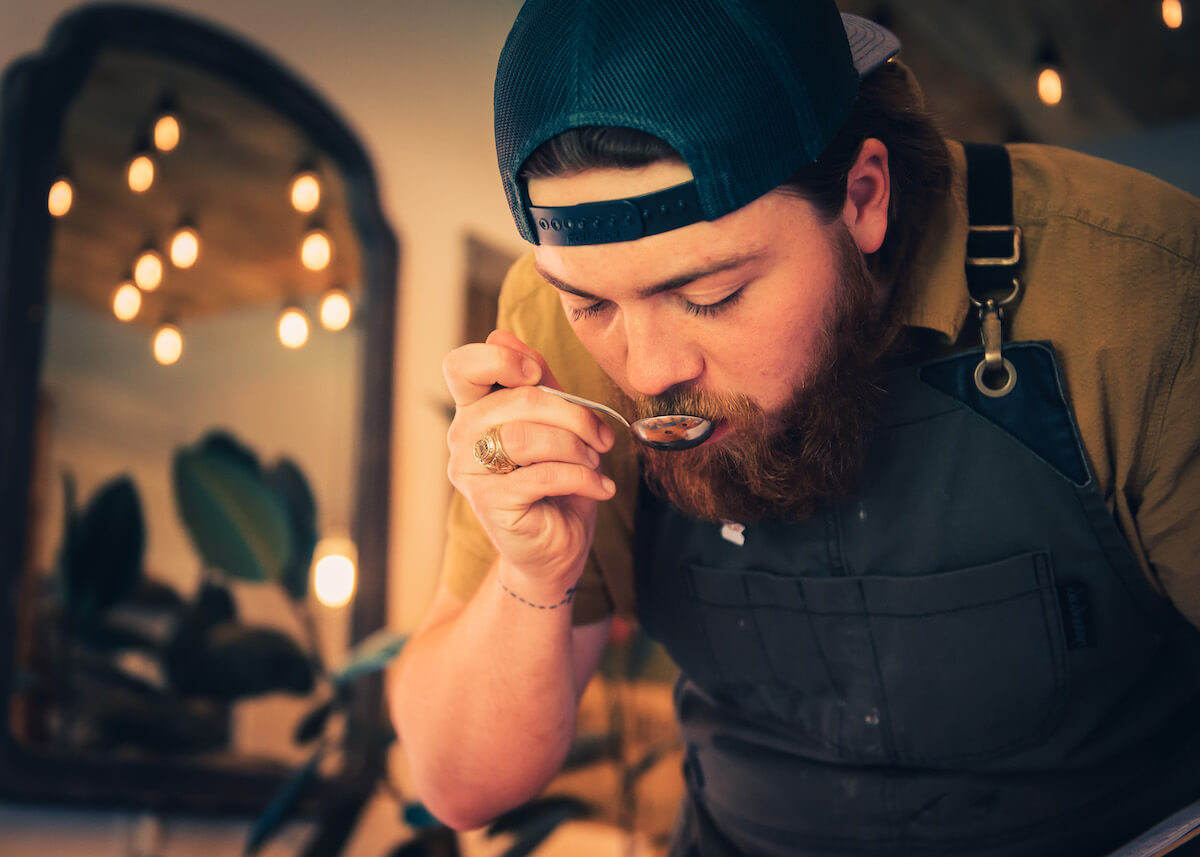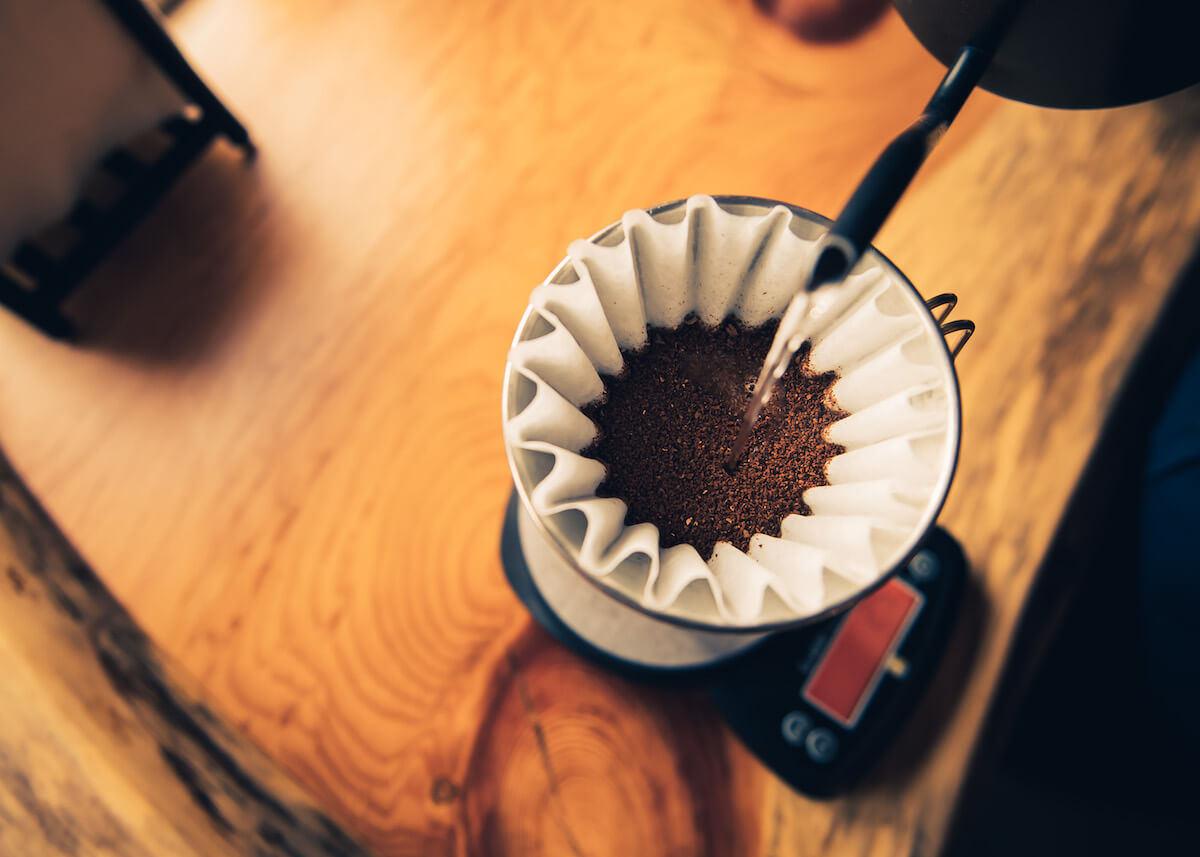Learning How to Articulate the Taste of Good Coffee
How To Become an Expert Coffee Taster in 3 Easy Steps

Arrott Smith
Roasting Manager & Quality Control

Cupping Process
Photograph by Steve Willis
In the world of specialty coffee, things are a bit different. By engaging it, you have made the conscious decision to transcend the world of traditional coffee. Believe me when I say, “There is no going back.” After you’ve begun to discern what we call “notes” (some call them flavors) in coffee, it’s impossible to ignore what your cup of coffee is tasting like. That being said, you’re not going to want to go back to the cup whose sole note is “coffee.”
I liken this change of perspective to what happened in my college studies. In college, I decided to study forestry. Now, I can’t help but see trees as more than just “pretty.” In my eyes, they’re now Pseudotsuga (fir) and Quercus (oak). It’s now muscle memory to analyze my surroundings in detail, while my friends simply see trees.
I don’t know about you, but I can’t imagine a world without coffee!
But here’s the thing: Just because you love coffee doesn’t mean you know how to articulate the taste of great coffee when you drink it. How do you put “good coffee” into words?
Believe me, once you start seeking the more nuanced flavors of coffee, the more you’ll enjoy the truly special cups of coffee. You’ll have that same muscle memory I have for trees!
As a specialty coffee roaster, honing in on these unique notes is one of the main things that we focus on at Peregrine. When you start training your coffee palate, you appreciate everything in the coffee process—from farm to cup. You’ll recognize how seemingly small differences “at origin” (where your coffee is farmed) create massive disparities between cups.
Here are three quick tips that will help you taste coffee like a pro:
Tip #1: Drink it black. Let it cool.
To discern an individual note in your coffee, you need it isolated. You’ll be hard-pressed to taste anything unique in a single-origin Ethiopian coffee when you load your cup with hazelnut creamer. No shame if that’s your thing, but if you want to taste the coffee for what it is, you need to drink it black. Also, try it hot. Try it warm. Try it cool. Note the flavors changing at different temperatures. You may not be aware, but coffee has the most clarity when it’s cooled.
Similar to that burning-hot bite of lasagna you put in your mouth, you’ll taste little complexity when a coffee is at peak temperature. But, when you let that lasagna cool a little bit, you can taste the robust, sweet and savory melody of tomatoes, ricotta, and parmesan reggiano.

Pour Over
Photograph by Steve Willis
Tip #2: Mix up how you brew, but always brew it well.
Every brew method has its strengths! Try your favorite coffee in a moka pot, as a pour over, or a French press. It’ll taste a little different each time. However, some things need to be consistent. Clean, filtered water and quality, cared-for equipment will produce the most pronounced notes. Always weigh both your coffee and water, as scientific as it sounds. How else could you have measurable, replicable results? The internet is full of recipes for your favorite method. We hope to unveil our favorite recipes to you very soon.
As I noted, clean, filtered water is of the utmost importance. Think about it this way: A cup of coffee is nearly 98% water. If your water has any sort of “off” flavor, so will your coffee. If your water is high in sodium, chlorine, or minerals, your cup of coffee will be too. With countless organic acids and flavor compounds present in a coffee, you never can guarantee they will react well with tainted water.
Any coffee shop worth its weight will have extensive water filtration systems to keep its product pure. This is one of many reasons people complain they can’t make their coffee quite as good at home.
But the good news is: You can! Take a few simple steps to improve your inputs, and your outputs will improve drastically!
Tip #3: Expand your palate!
How will you know your coffee tastes like dragon fruit or cloves or aloe vera if you’ve never tasted those things? Be epicurious! Try new foods and flavors every chance you get! Watch what happens! Your coffee vocabulary will expand in ways you never dreamed it could. That mystery note that you just couldn’t place will remind you of something all of a sudden.
There’s so much more to it, but keep these 3 oft-forgotten tips in mind and your coffee tasting skills will change overnight.
But wait. Since you’ve read this far. . . how about a bonus tip?
That’s right— a super secret fourth tip!
Tip #4: Cup your coffee!
I bet you’ve wondered to yourself, “How do they come up with those notes they put on the label anyway?”
Here’s the industry secret for ultimate flavor clarity in coffee:
Cupping.
Cupping is a process that I’d love to deep dive into right now, but I don’t know that I’d do it justice. It’s a subject all its own.
Instead, check out this at-home cupping guide I’ve just written for you. It’s an easy process you can implement to explore all of the complexities in your cup of coffee.
Devoted to the Journey,
Arrott

0 Comments